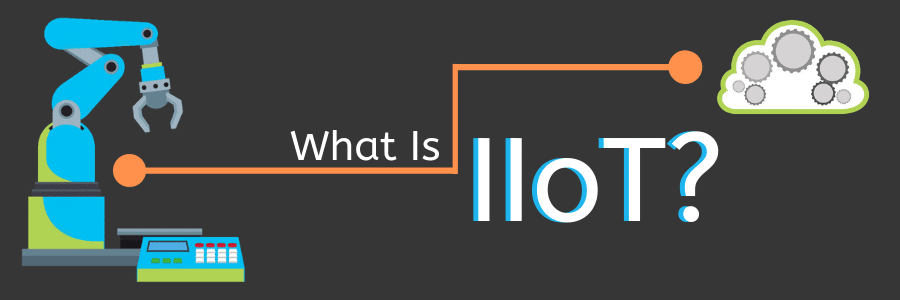By Layne Alfred, Marketing Associate
Perhaps you’re familiar with IoT, the Internet of Things, which allows for intelligent communication between machines. So, what is IIoT? It’s not a typo– it’s the Industrial Internet of Things, or IoT applied to a manufacturing environment. IIoT is how we connect machines to an infrastructure instead of connecting machines to applications, like many machine-to-machine IoT communications that are currently in place. The biggest difference between IIoT and IoT is that IIoT functions on a much larger scale than IoT, which tends to be more user-centric and focuses more on an individual’s applications rather than large-scale factory or industrial applications. IIoT has helped manufacturers make such amazing strides in increasing quality control, traceability, sustainability and overall efficiency that it’s even been called our next Industrial Revolution.
How IIoT Works
A network of manufacturing devices communicate with each other via interfaces to monitor, collect, exchange and analyze data. Intelligent assets such as sensors or actuators connect to a data communications infrastructure, such as the cloud, via an IIoT gateway device. The IIoT gateway, or edge device, converts the information presented from the application into insights that can be acted upon and used to make informed business decisions.
Leveraging IIoT for Your Business
According to a 2017 IBM study, “Sixty percent [of industrial companies] surveyed in our 2017 study are currently executing plans to incorporate IoT into their operating models.”
%
Industrial companies currently implementing IIoT
There’s a reason for the popularity: the possibilities with IIoT are endless. This makes it even more important to pinpoint what specific initiatives you’re trying to tackle. Predictive maintenance, facility management, equipment monitoring, safety monitoring of workers and energy consumption optimization are among the most rewarding benefits of IIoT implementation on the plant floor alone. Beyond that, IIoT provides asset tracking, insights to customer satisfaction, remote maintenance and transportation monitoring. Overall, visibility into industrial processes that allows for smarter decisions increases exponentially with IIoT.
Perhaps the most common (and successful) outcome of IIoT implementation is more efficient maintenance. With IIoT, there’s no longer a need for regularly scheduled maintenance visits. Businesses can now implement condition maintenance, where sensors alert the company that the machine is in need of repair, and predictive maintenance, which looks for signals that a machine may soon be in need of a repair. For example, sensors may detect the very beginning of corrosion in a refinery pipe, allowing manufacturers plenty of time to schedule a repair before the machine even experiences malfunctions. This greatly reduces downtime, safety hazards and recall and maintenance costs.
Challenges of IIoT
With all of these great benefits being highlighted, however, IIoT implementation is not foolproof and requires a bit of customization within your business. One difficulty is that 80% of IIoT data generated is unstructured, meaning there is no rhyme or reason whatsoever to the data. This is because most of the data generated by hundreds or even millions of sensors is volatile and often latent, making it very difficult to scale horizontally, especially if your IIoT network is housed in a traditional relational database. The first solution to this challenge is to optimize your relational database by implementing scalability and flexibility capabilities as well as real-time analytics. This will make it easier for your system to ingest the massive throughput gathered by the machine sensors.
The second solution is to add artificial intelligence (AI). Manufacturers are finding that combining their IIoT system with AI to help make informed decisions is critical in making the most of the data. Without AI, it can be extremely difficult to make sense of the tons of data being generated.
“[Of] two thirds of reinventors, those identified as having the highest levels of IoT adoption and taking a visionary approach to an Intelligent IoT strategy, strongly agreed that the full potential of IoT can only be realized with the introduction of AI technologies,” said Dr. Kareem Yusuf of IBM.
Another challenge seen with IIoT, and perhaps one of the most unique, actually has to do with the long service lives of industrial applications. Since these applications will function on plant floors for up to 10 years, your IIoT implementation needs to be built to last. Careful consideration needs to be put on the manufacturers existing systems so any data extracted from the machines will be compatible with them, regardless of the inevitable technological changes that will happen within even a decade. Without a durable and adaptable system that clearly digests data, implementing IIoT won’t be worth the input.
The Future of IIot
The potential of IIoT in the future is tremendous. As far as revenue-per-employee goes, manufacturing companies have, in the past, exhibited some of the lowest numbers. With a combination of IIoT and AI, however, some predict that this will give industrial manufacturers some of the highest revenue generated per employee. IIoT has the potential to be life-changing for a lot of people.
Remember when I mentioned that 60% of current manufacturing companies have current plans in place to execute IIoT? More than even that, Forbes reported that out of 500 executives, 90% said IIoT would be important for their companies in the future. Whether the manufacturing industry is actively implementing these technologies or not, it’s very clear that the entire industry is gearing up for the transformation. So, will it be the next Industrial Revolution? Only time will tell.

Layne Alfred
Marketing Associate

